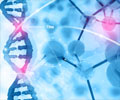June 19th is commemorated as the world sickle cell day to raise awareness about the genetic blood disorder globally.

- World Sickle Cell Day is marked on 19th June each year.
- An estimated 500,000 live births with sickle cell disease (SCD) occur each year and 50% of these children die before the age of 5.
- This year’s theme revolves around safe, tested, cross-matched blood for every person with SCD
What is Sickle Cell Disease (SCD)?
Sickle cell disease (SCD) is a genetic blood disorder where the gene responsible for producing normal hemoglobin has a mutation which results in the production of abnormal sickle-shaped red blood cells. People with SCD have abnormal hemoglobin molecules termed hemoglobin S. These abnormally shaped cells agglutinate causing reduced blood and oxygen to vital body organs and tissues. People with SCD suffer from clotting, pain, dyspnea (breathlessness) and often deal with brain, kidney, digestive, cardiac and respiratory complications. Rapid degeneration of red blood cells also causes jaundice. Many children with SCD succumb to jaundice and liver failure in their early years. Pulmonary hypertension or high blood pressure in the blood vessels supplying to the lungs is a major cause of adult deaths. SCD is responsible for high mortality rates in affected populations.Regular treatment involves symptom management and improving life quality. Prophylactic blood transfusions on a regular basis are the core treatment for SCD along with other regular therapies and testing. At present, there is no cure for SCD except bone marrow transplant which is a costly procedure which may or may not work. Bone marrow transplant requires an HLA-matched donor usually a sibling. Gene therapy to insert a normal gene producing hemoglobin has been progressing positively with the clinical trials moving into Phase 3.
World Sickle Cell Awareness Day 2016
World Sickle Cell Awareness Day is marked on 19th June each year. In 2008, the General Assembly of the United Nations adopted a resolution to consider sickle cell disease (SCD) as a serious public health concern. SCD is one of the most prevalent genetic disorders across the globe. It is mostly concentrated in the four continents of Africa, Asia, North and South America. It is also present in Southern Europe in Italy and Greece. An estimated 500,000 live births with SCD occur each year and 50% of these children die before the age of 5.With advocacy from the Sickle Cell Disease International Organization (SCDIO) and commitment and support from the world scientific community, the African Union (2005), the UNESCO (2005), WHO (2006), and the United Nations (2008) recognized sickle cell disease as a public health priority and therefore,emphasize the need to commemorate a day to recognize this serious health issue. The primary need is to raise awareness about this disorder and preventive measures including genetic counseling, antenatal and prenatal testing.
World sickle cell day 2016 is being celebrated across the globe in collaboration with several sickle cell clinics and patient advocacy organizations to raise awareness on prevention and optimal management of SCD. This day calls for public-private partnerships from respective national governments, local government bodies, non-governmental organizations, clinical communities, medical researchers, parents and caregivers and patient communities. The common goal is to create support services and a range of clinical programs to enable the sickle cell communities to lead a quality life.
- Creating awareness of the realities faced by the sickle cell community
- Public consciousness raising to support prevention programs through genetic counseling
- Proper public health programs to deal with clinical management of the disease
- Initiating newborn screening to catch the disease early
- Dispelling myths about the disease
- Educating the parent and patient communities
- Upgrading clinician knowledge on the disease
- Stepping up efforts for progress in therapeutic research
- To create public awareness on the importance of blood donation
- To create more bone marrow and stem cell registries
- To push public policy makers and government decision makers to create proactive policies to create a better life for people with SCD
Organizations across the globe are calling for voluntary blood donation drives to provide phenotype-matched blood to people with SCD. Safe channels providing blood transfusion to people with SCD is important to avoid transmission of human viruses.
New Horizons
Until a cure is found for SCD, it is important for people to stay healthy, take proactive steps in maintaining their health and comply with available treatment procedures. New hope has been generated with the latest update that gene therapy for SCD has made new strides. In the journal Blood (2016), researchers Hoban, Orkin and Bauer have explained the process of gene therapy for SCD which now uses next-generation lentiviral vectors, new genome engineering and gene regulation approaches with the goal of preventing the red blood cells from degenerating into the sickle shape. Preclinical studies have been successful and several clinical trial sites have now opened up. These prospects provide much hope and positive outlook for SCD communities across the globe.References:
- Sickle Cell Disease Association of American
http://www.sicklecelldisease.org/ - What Are You Doing for World Sickle Cell Day?
http://sicklecellsociety.org/what-are-you-doing-for-world-sickle-cell-day/ - http://www.unesco.org/new/en/unesco/events/all-events/?tx_browser_pi1%5BshowUid%5D=4087
- http://sicklecellanemia.ca/pdf_2016/world_sickle_day_ready.pdf
- http://www.moh.gov.sa/en/HealthAwareness/healthDay/2015/Pages/HealthDay-2015-06-19.aspx
- https://ghr.nlm.nih.gov/condition/sickle-cell-disease
- Hoban, Megan D., Stuart H. Orkin, and Daniel E. Bauer. "Genetic treatment of a molecular disorder: gene therapy approaches to sickle cell disease." Blood (2016): blood-2015. Accessed on 16 June 2016












